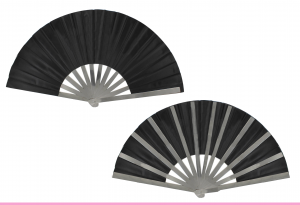Systems
The Way of the Dragon Martial Arts offers programs for all ages. It doesn’t matter how old you areas we offer a wide range of family oriented classes arraigned by age level in order to make learning more enjoyable and comfortable. Our focus is on the self-defense aspect of the arts where awareness, common sense, and diplomacy are enacted before any physical actions occur.
This is the primary system taught at The Way of the Dragon .
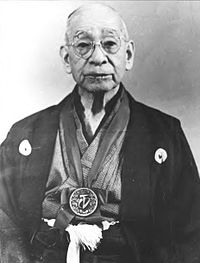
Chōshin Chibana
Shorin is the Japanese word for the Chinese word “Shaolin” Shaolin is the name that describes the monastery in China where many of the training exercises and techniques were first developed. Shaolin means “little pine forest” the monastery’s location. These techniques were practiced in China’s mountain regions where there ultimately became a number of martial arts including Shorin Ryu. The style
is typified by quick, angular attacks and defensive postures, rapid punching and quick crisp kicks. The founder of Shorin Ryu karate, Chotoku Kyan, was born at Okinawa in 1870 and died in 1945.
This is the second system taught at The Way of the Dragon .
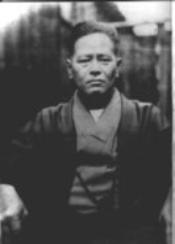
Founder: Chōjun Miyagi
Goju Ryu means the way of Hard and Soft. It has its roots in the lower lying regions of China where boats, rice paddies and water were a part of a practitioners life. GoJu Ryu has deep stances, powerful punching techniques and direct attacking as well as free flowing defensive postures. The founder of Goju Ryu karate, Miyagi Chojun, was born at Okinawa in 1888 and died in 1953.
Also taught at The Way of the Dragon .
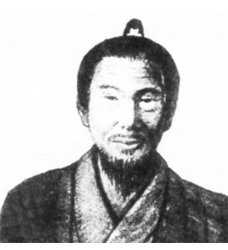
This art reflects the Okinawan culture as its origin. The Okinawan weapons reflect the tools of the farmers and fishermen which include the Kun (staff), the Kama (sickle), Nunchaku (sifting flail), the Sai (both a fishing and farming implement), the Tonfa (rice grinding handle), the Aku (a boat oar), the Nunti-Bo (fishing implement to haul lines and nets). The practice of Kobu-Do enhances one’s coordination, balance, strength, speed and reflexes through the study and practice of a number of Katas (forms–series of specific movements) taught in a progressive manner from the simplest to the most intricate. Kobudo is taught only to The Way of the Dragon Karate-do students who formally request and get permission to practice this ancient art. In 1750, Sakukawa (or Sakugawa) began his training as a student of an Okinawan monk, Peichin Takahara. After six years of training, Takahara suggested that Sakugawa train under Kusanku, a Chinese master in Ch’uan Fa. Sakukawa spent six years training with Kusanku, and began to spread what he learned to Okinawa in 1762. He became a such expert that people gave him, as a nickname: “Tode” Sakugawa (Sakugawa “Chinese Hand”). His most famous student, Matsumura Sokon, went on to develop the Shuri-te which later develop into Shorin-ryu style of karate.
Kabu-do Weapons:
The Bo Staff
The Sai
The Tonfa
The Kama
The Eku
The Nunchaku
The Tesson
The Katana
The Bo Staff
The word “rokushakubo” means 6 foot staff. Roku is 6 and Shaku is a measurement approximately 1 foot. Bo means staff. It is made from hardwood. The Bo is approximately 6 feet in length, in principle the Bo should be at least one fist length taller than the wielder. Its diameter is between 1 and 2 inches. The Bo can be straight or tapering towards the ends.
The Bo was used as a walking staff and as a yoke to carry loads in buckets or baskets. In the latter case, the Bo was placed across the shoulders and the loads were suspended by rope from the ends.
The Bo depends entirely on Te (hand) techniques. Proper turning and twisting of the wrist is necessary. Kobudo Masters spent many years practicing with the Bo before attempting combat.
The Bo is gripped with the hands spaced one-third down from each tip. When held horizontally in front, the right palm is facing away from the body and the left hand is facing the body. The opposing grip of the hands enables the Bo to rotate. The power is generated by the back hand pulling the Bo. The front hand is used for guidance. It is important to twist the wrist when striking and poking just like turning the hand over when punching.
Back to the Kobudo Section
Back to the Kobudo Intro
Back to the Top of the Page

The Sai
It is sometimes known as a short sword, but is closely related to a trident. It is a hand weapon with a blade between 15 and 20 inches in length with forward curving quillions, hand grip, and pommel. It is made from solid iron weighing up to 3 pounds. The Saki of the Monouchi should extend 1 to 3 inches past the elbow.
The Sai can be sharp, blunted, or smoothed out and is one of the few Okinawan weapons that did not evolve from farm tools. The iron for the Sai originated in China and was brought in by traders.
Often 2 or 3 Sai were carried, 1 in each hand and a third in the belt in reserve. The Sai and its technique are unique to Okinawan-based Karate systems.
The use of the Sai requires a very high standard of training and skill. Each Sai must function in harmony with the other. Proper use of the Sai requires many years of training.
The Sai has several grips. An open Sai is when the Tsukagashira is at the heal of the palm. A closed Sai is when the Tsukagashira is at the finger tips and the Monouchi lies on the forearm. The Yoko is used for trapping and breaking of weapons.
Back to the Kobudo Section Back to the Kobudo Intro Back to the Top of the Page

The Kama
The Kama has a short blade at right angles to a hardwood handle. The handle is a little longer than your forearm and tapers from the bladed end to the reverse end. The Monouchi is between 6 and 10 inches in length. It is sometimes upgraded to Kama-Yari (Spear with a hook blade) and the Kusari-Gama (Sickle and Chain).
Typically two Kama are used. Because of the Monouchi and the difficult techniques used, the Kama is considered an advance weapon. Great care and focus is required as well as many hours of practice.
The Kama has two positions, open and closed. The open position is when the Kama is gripped like a hammer. The closed position is when the handle of the Kama rests along the forearm. The Kama rotates between the index finger and the thumb when going from the open and closed positions.
The Kama is a hand-held sickle which was used for rice harvesting It can be found in Southern Asia and Japan. The Kama is gripped at the Ushiro Tsukagashira in some systems, and at the Moto in other styles.
Back to the Kobudo Section
Back to the Kobudo Intro
Back to the Top of the Page

The Tonfa
The Tonfa is made of hardwood. It is between 15 to 20 inches in length with a projecting side handle about 6 inches down the from the front end. The Ushiro Tsukagashira should extend 1 to 3 inches past the elbow. The body of the Tonfa may be square or round.
The Tonfa is gripped so that the thumb and index finger are at the Tsukagashira and the Yoko Nage is on the bottom of the forearm. It can be used for punching and blocking as in karate. The true power of the Tonfa comes from the swinging motions used for striking and blocking.
The Tonfa was used as a handle to turn a hand operated millstone when grinding rice. Like the Sai, the Tonfa is used in pairs. The Tonfa takes time to develop smooth techniques. Each Tonfa must work in harmony with the other. Proper spinning, rotation, and control require many hours of practice.
Back to the Kobudo Section
Back to the Kobudo Intro
Back to the Top of the Page
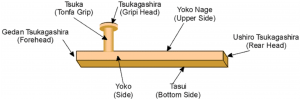
The Eku
The Eku is made from hardwood. It is shorter than the Bo. In principle the Eku is the same height as the wielder.
The Monouchi extends one-third the length of the Eku. The Monouchi has 4 surfaces, the Saki, 2 Yoko, a beveled edge, and a rounded face.
The Eku is uniquely Okinawan. The Eku was a common place oar put to deadly use by the Okinawan fishermen.
The Eku is considered an advance Bo. The Eku uses the techniques of the Bo. However, the Eku requires more skill because of the necessary wrist action needed to use the proper surface. Use of the Eku requires excellent knowledge of Bo techniques.
The grips for the Eku are similar to the ones for the Bo. The right hand grips the Eku at the Moto right behind the Monouchi. The left hand is about one shoulder width down from the right hand. Like the Bo the back hand generates the power and the front hand is used for guidance and control.
Back to the Kobudo Section
Back to the Kobudo Intro
Back to the Top of the Page

The Nunchaku
The use of Nunchaku is typically Okinawan. This innocuous looking weapons is made with two equal lengths of hardwood hinged by a short piece of silk cord or chain. The lengths of wood are about as long as your forearm. The cord should span the back of your hand. The Nunchaku is gripped at the Ushiro Tsukagashira.
The Nunchaku are common as plain agricultural gain flails all over Souther Asia and the larger versions used to be found in Europe. Under the severe dominance of the Japanese, the Okinawans developed the weapon as subordinate branch of fighting always done from te postures.
It is first whirled in a fast figure-eight or zigzag motion before the opponent with the objective of disturbing the composure and gaining a mental initiative. The rotating of the Nunchaku comes from the wrist motion. As the Nunchaku rotates, the two pieces of wood should stay in line with each other. The free hand carries out the normal te movements of blocking and defending as the chances occur. The Nunchaku delivers smashing blows to the face, hands, wrists, knees, shoulder blades, or the ribs.
Back to the Kobudo Section
Back to the Kobudo Intro
Back to the Top of the Page
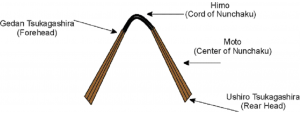
The Katana
Historically, katana were one of the traditionally made Japanese swords used by the Samurai of ancient and feudal Japan. The katana distinctive appearance is a curved, single-edged blade, generally sized two feet or larger with a circular or squared guard and long grip to accommodate both hands.
The Katana was largely used for battle. The Bokken (or Boken) is a Japanese wooden sword that was used for training and usually the size and shape of a Katana.
Back to the Kobudo Section
Back to the Kobudo Intro
Back to the Top of the Page

The Tessen
Tessen were folding fans with outer spines made of heavy plates of iron with sleeves where long sharp needles could be hidden and extracted for use in battle. The outer edge was sometimes sharpened to a razor like finish.
The Tesson were designed to look like normal, harmless folding fans which could be used as a club when the fan was closed. Samurai could take these to places where swords or other overt weapons were not allowed such as official buildings.
The Tessen was also used for fending off knives and darts, as a throwing weapon, and as an aid in swimming.
The Tessen (war fan) was a folding fan used by Generals, samurai and court officials. The sticks were of black lacquer, with guards of bronze or iron which supported a heavy paper leaf.
Back to the Kobudo Section
Back to the Kobudo Intro
Back to the Top of the Page
